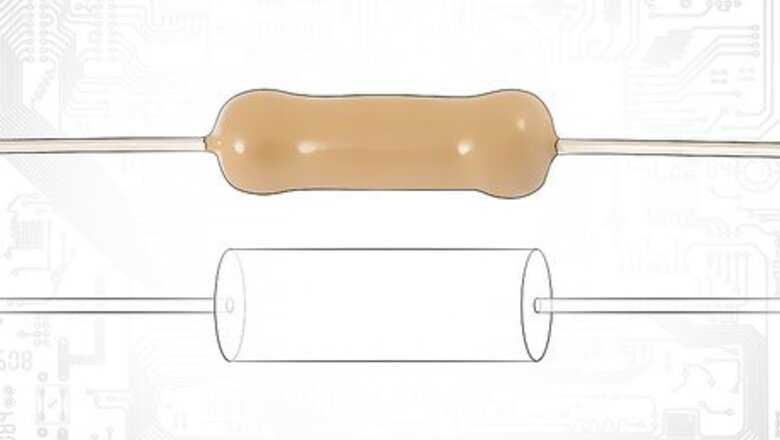
views
Color Coded Resistors (Axial Resistors)

Axial resistors are cylindrical with leads extending from each end.

Look at the resistor so the group of 3 or 4 color bands are on the left side. These are sometimes followed by a gap, then an additional color band.

Read the color bands from left to right. The colors on the first 2 or 3 bands correspond to numbers from 0 to 9, which represent the significant digits of the resistor's ohmic value. The last band gives the multiplier. For example, a resistor with brown, green and green bands is rated at 15 mega-ohms (15,000,000 ohms). The code is as follows: Black: 0 significant digit, multiplier of 1 Brown: 1 significant digit, multiplier of 10 Red: 2 significant digit, multiplier of 100 Orange: 3 significant digit, multiplier of 1,000 (kilo) Yellow: 4 significant digit, multiplier of 10,000 (10 kilo) Green: 5 significant digit, multiplier of 100,000 (mega) Blue: 6 significant digit, multiplier of 1,000,000 (10 mega) Violet: 7 significant digit Gray: 8 significant digit White: 9 significant digit Gold: multiplier of 1/10 Silver: multiplier of 1/100

Read the color on the last color band, which is farthest right. This represents the tolerance of the resistor. If there is no color band, the tolerance is 20 percent. Most resistors have no band, a silver band or a gold band, but you may find resistors with other colors. The tolerance color code is as follows:

Brown: 1 percent tolerance

Red: 2 percent tolerance
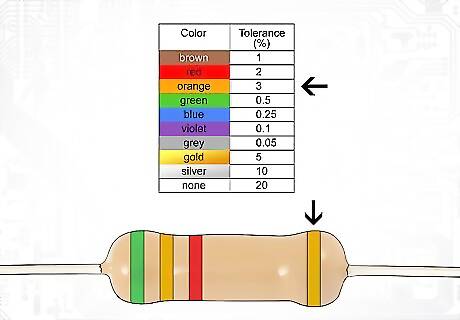
Orange: 3 percent tolerance

Green: 0.5 percent tolerance

Blue: 0.25 percent tolerance
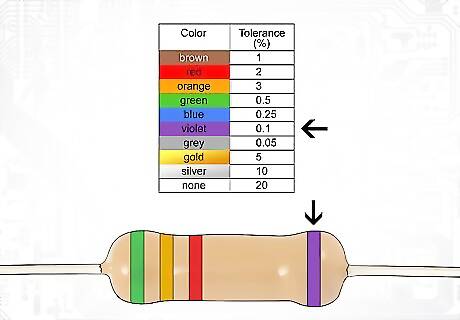
Violet: 0.1 percent tolerance
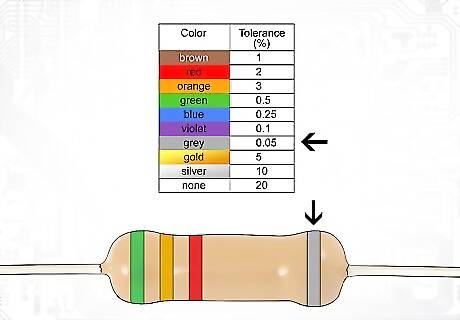
Gray: 0.05 percent tolerance

Gold: 5 percent tolerance

Silver: 10 percent tolerance

Memorize a mnemonic for resistors. Several exist, so choose the one that you won't forget. Remember that the first color is black, and afterward each first letter corresponds to a color in order from 0 to 9. Some popular mnemonic devices include: "Bad beer rots our young guts but vodka goes well." "Bright boys rave over young girls but veto getting wed."
Alphanumerically Coded Resistors (Surface Mounted Resistors)
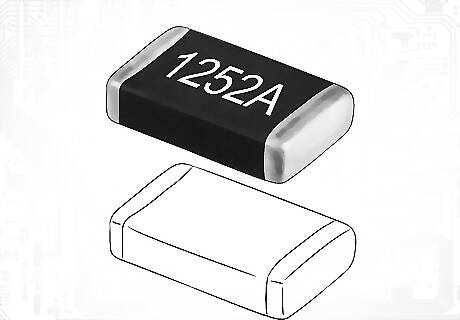
Surface mounted resistors are rectangular in shape with leads that extend from opposite sides or the same side and are bent downward for mounting on circuit boards. Some resistors have contact plates on the bottom.

Read the 3 or 4 numbers on the resistor. The first 2 or 3 represent the significant digits and the last indicates the number of 0s that should follow. For example, a resistor reading 1252 indicates a rating of 12,500 ohms or 1.25 kilo-ohms.

Compare the letter at the end of the code with the tolerance it represents.

A: 0.05 percent tolerance
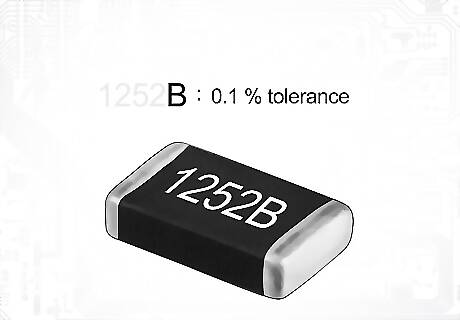
B: 0.1 percent tolerance

C: 0.25 percent tolerance

D: 0.5 percent tolerance
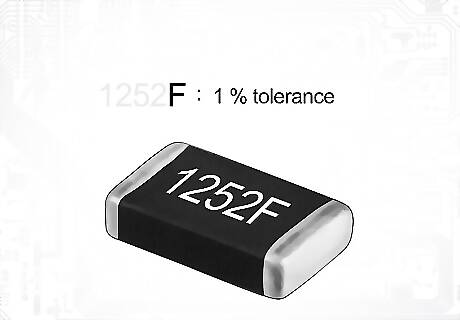
F: 1 percent tolerance

G: 2 percent tolerance

J: 5 percent tolerance

K: 10 percent tolerance

M: 20 percent tolerance
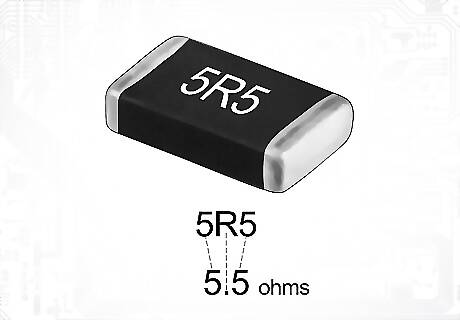
Check to see if there is a letter "R" within the numeric code. This indicates a very small resistor, and the letter takes the place of a decimal point. For instance, a 5R5 resistor is rated at 5.5 ohms.
















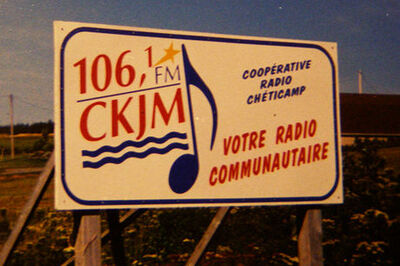

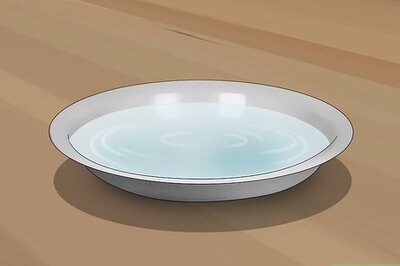

Comments
0 comment